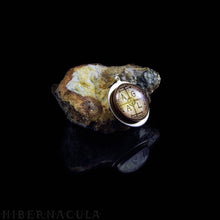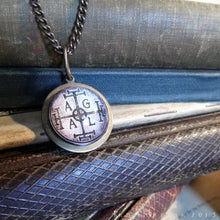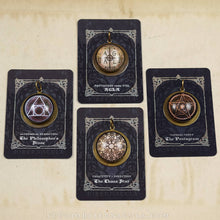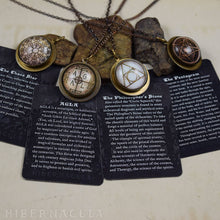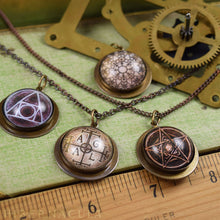
A protective magical talisman, inscribed “AGLA,” designed for the reverse of the Sigil of Ameth by Dr. John Dee, under the supposed direction of the angel Uriel. It is a common form of an amulet already in use for several hundred years. AGLA is a notariqon (kabbalistic acronym) of the biblical phrase “Ateh Gibor Le-olam Adonai, The Lord is mighty forever.”
AGLA was considered a name of God by magicians of the middle ages and appeared in magical formulas for everything from protection to flying. By Renaissance times, the formula was a common inscription for amulets and talismans. AGLA is used in its short form in a number of apotropaic circle-making formulas. The Golden Dawn used it as the “God Name” of the North quarter in the “lesser banishing ritual,” representing Earth, and in the GRP to represent the passive elements of water and Earth. Agla also appears in Masonic lore, and some Masonic scholars have suggested that AGLA was a substitution for the “Word which was lost,” a primordial name of God or magical incantion which may represent the tetragrammaton.
The symbol can be found on many fine pieces of the Renaissance era, including the 1427 “Ghent altarpiece” by Jan van Eyck. This talisman has a 20 mm diameter and is framed in solid antiqued brass.
Chains can be found in the Chains & Accessories section.





